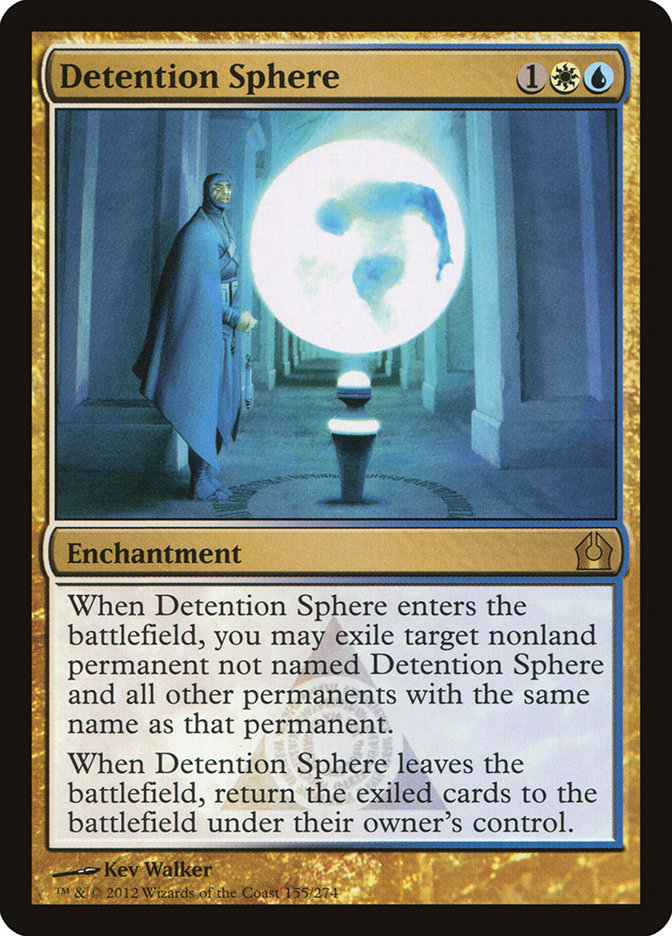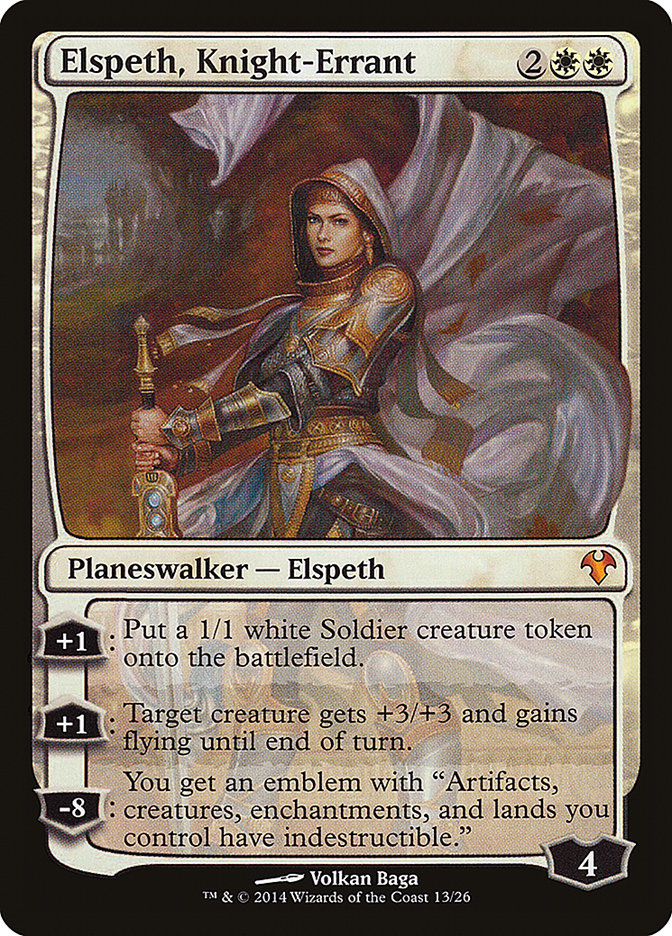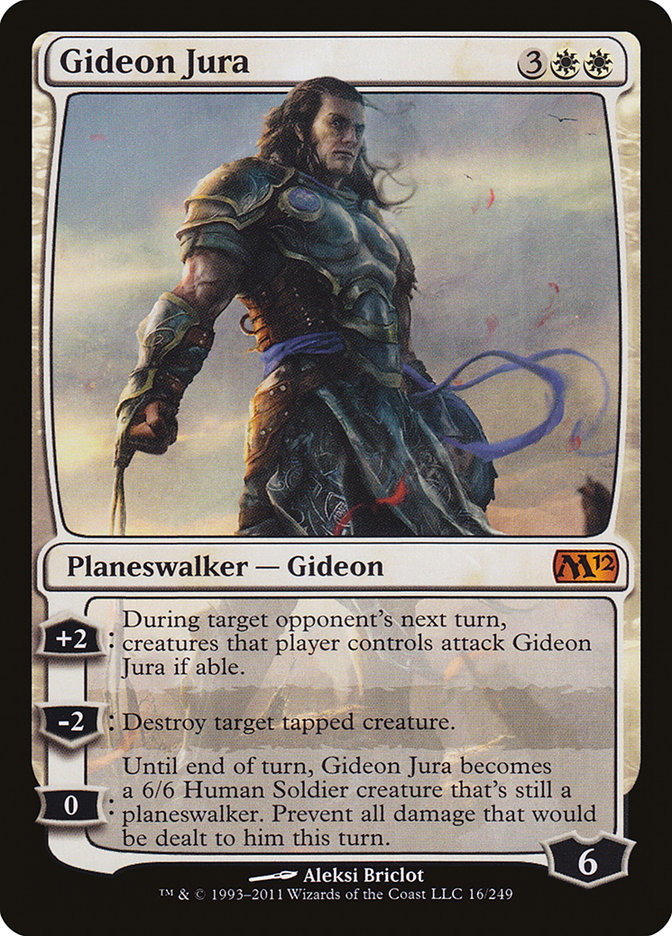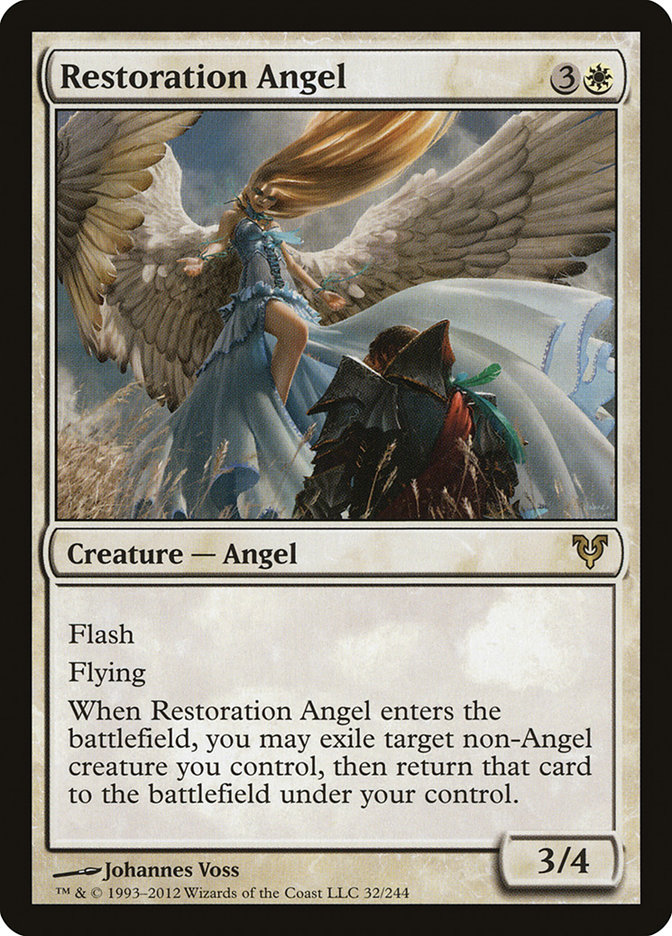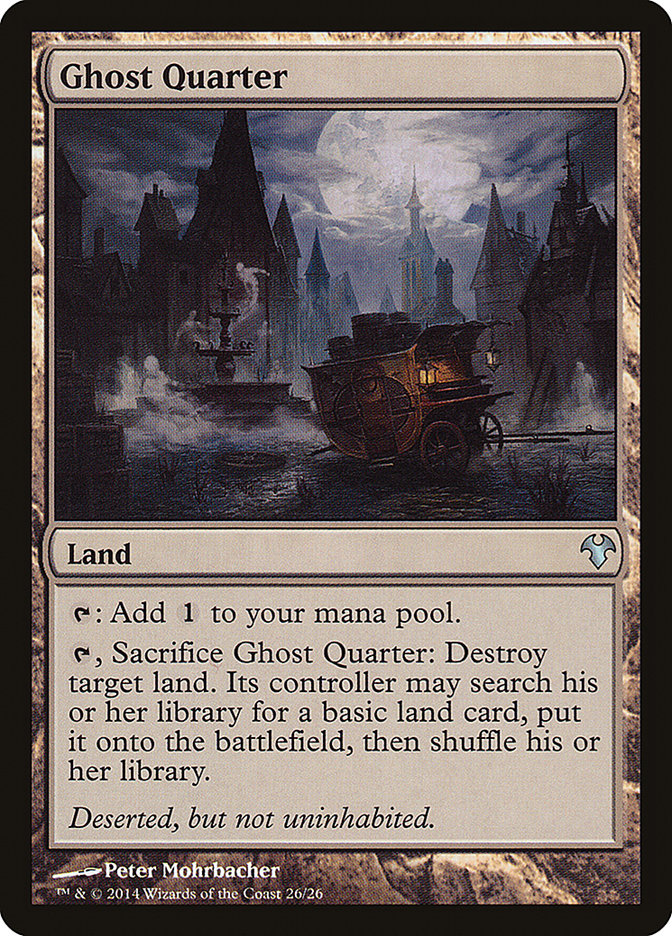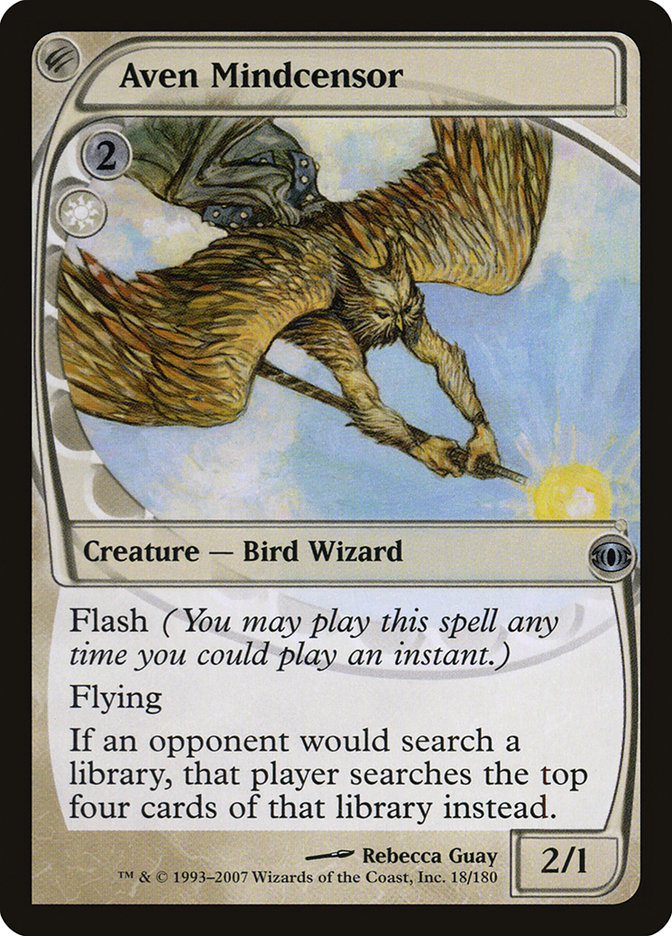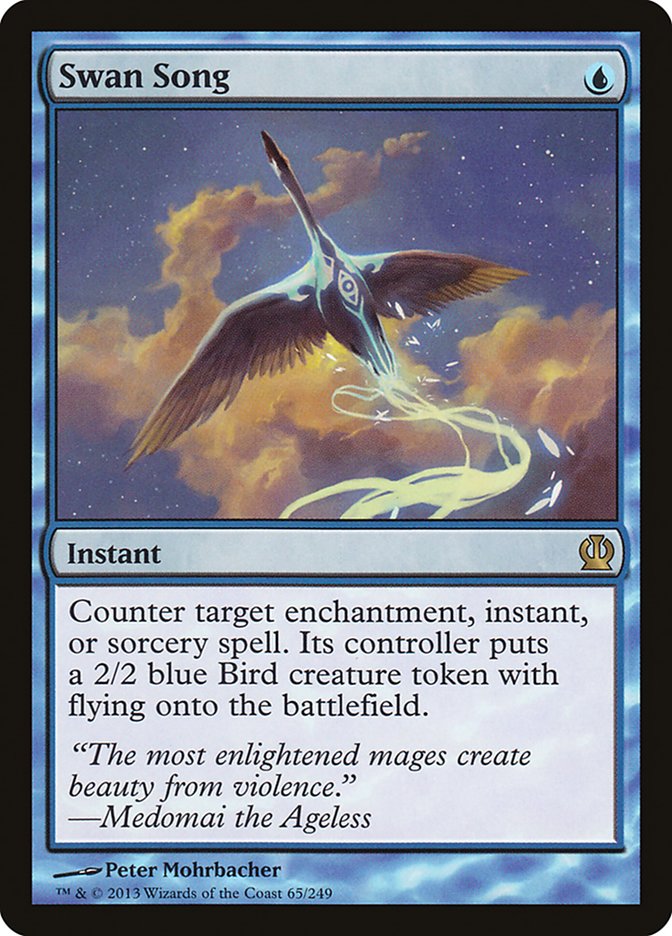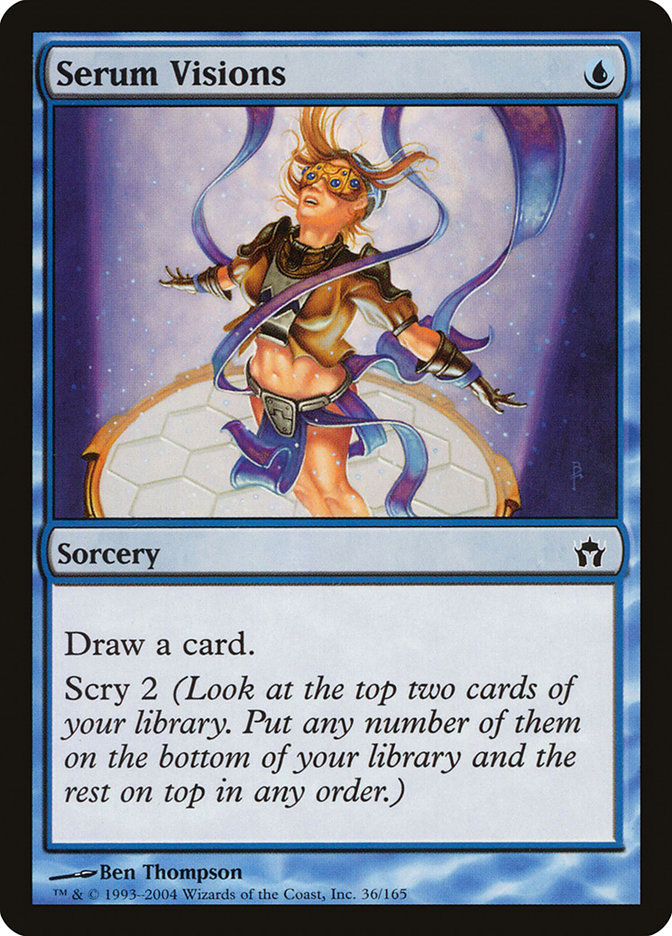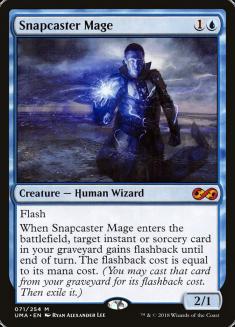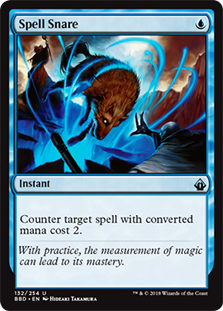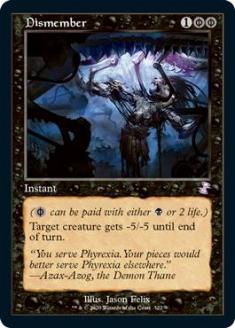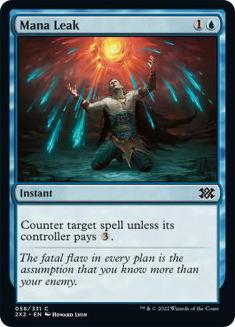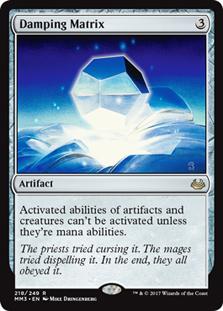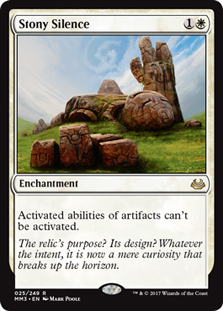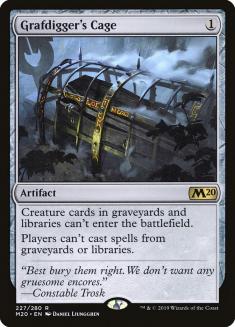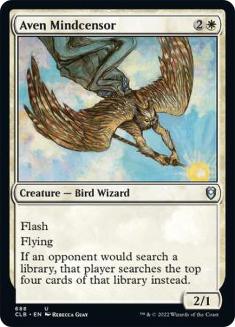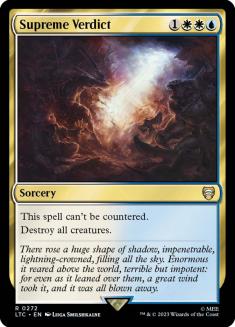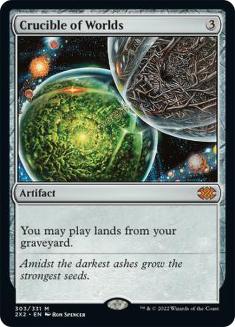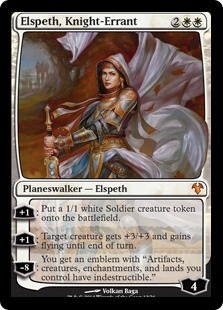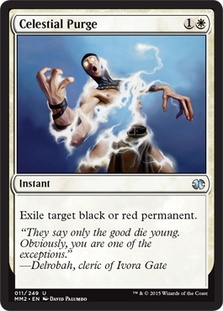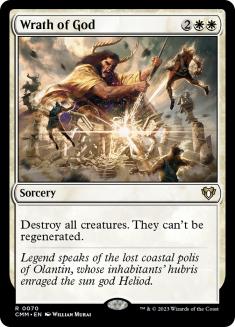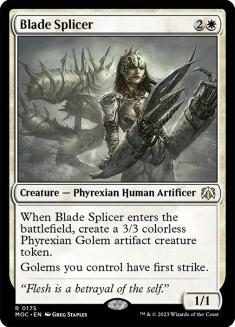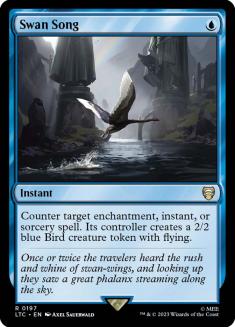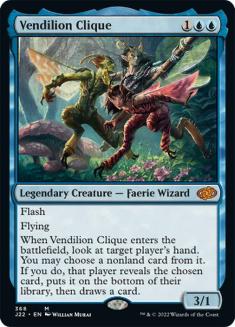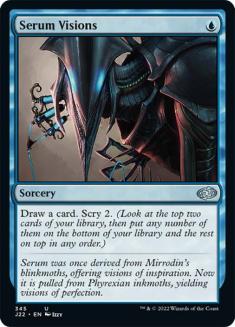This weekend, I wanted to battle.
There was a local store credit tournament that wasn’t too bad, but those aren’t offering the prize I cherish most: a(nother) Pro Tour invitation. Southern
California is a bit lacking in Modern PTQs this season, and when I realized one was a mere seven hours away, I decided I wanted to play in it.
My results over the past couple of weeks haven’t been very good; I’ve lost more than I won, in fact. However, my head space was making me happy. My lines
were solid, I found only a few leaks when reviewing my games, and I was playing Magic I don’t mind saying made me proud. I’ve never been the kind of person
to believe in “heaters”-Jared Boettcher notwithstanding. I believe in trusting my observations, and they told me that I should be playing in it.
Only one problem-card availability. I made my decision late in the week, restricting me to what I could lay my hands on. U/W/R Kiki was attractive, but I
couldn’t find Kiki-Jikis. I remembered Shaheen Soorani’s run at Grand Prix Richmond with U/W Control, and I started
reviewing U/W decklists and recent events in the area.
A glance through events in the area indicated that Affinity, Birthing Pod, and Jund were among the most popular decks. Scapeshift was on the rise, a common
trend, but U/W/R and U/R Twin weren’t as popular as they might be online or in other metagames. Shaheen’s deck, built to wrangle the board and play a
proactive control game, seemed like it could at least be built to win those matchups.
So, I got to work.
For starters, here’s Shaheen’s list.
Creatures (5)
Planeswalkers (6)
Lands (19)
Spells (30)

I wrote an entire article about how good Lightning Bolt is in
Modern, but the format is finally warping to the point that the top decks are relatively resilient. Pod easily outpaces it, Affinity is fine with any trade
it creates, Jund’s only vulnerability is really Dark Confidant and sort of manlands, Twin is excellent against it, and U/W/R doesn’t care either. Many of
the less popular decks are combo decks, which likewise function well against Bolt-heavy draws. Wrath of God, on the other hand, seemed to be ticking up in
value. With Thrun on the rise and decks with Mana Leaks and lots of creatures on the decline, I knew I’d tweak in favor of Wrath but keep at least one
Verdict around.
Let’s talk about the things that seemed bad.
Shaheen cited Detention Sphere as an important contributor to his success, but I didn’t see it. It seemed like a good way to wind up dead against Affinity,
and it is incredibly vulnerable against Pod; to be honest, the Pod victories he cited on its back made me think he just ran pretty good or his opponents
made large errors if they couldn’t punish him for Sphering Pod.
Against Jund, it would give value to the Abrupt Decays that were otherwise basically blank, which is dangerous business. Abrupt Decay is the kind of card
people often don’t think to board out-a mistake many people make when evaluating objectively efficient but poorly positioned cards during sideboarding. I
wanted to punish those players, and I also liked being able to rely on my signature singleton Crucible to haul me through Liliana and manlands into a
Colonnade-based late game against players who didn’t have Decay ready. I don’t even mind if Crucible gets Decayed because I can play it in such a way that
I still get a land out of the deal, at a minimum, and the matchup is such a grind that every card counts.
Sphere’s very good when it works… but my instincts refused to let me trust it to work enough of the time.
Elspeth, Knight-Errant is very powerful against most Tarmogoyf-based decks, but the shifts both locally and in the metagame at large seemed against its
favor. It’s horrible against the U/W/R decks, as they run more flying creatures now and can easily beat her down. Elspeth is certainly relevant against
Pod, both as a defense and as a way to break through the lines, but there are better cards that accomplish similar things-Sword of Feast and Famine or
Sword of Light and Shadow, for example.
At the end of the day, she’s quite narrow but great where she works. Considering that control and legitimate combo decks were two of the worst matchups, I
wanted more threats at non-sorcery speeds in order to shore up those matchups. Restoration Angel certainly fit the bill and I decided to maindeck them as
the new threat at four mana, which I’ll discuss later.
I was wary of Gideon. Another friend of mine, Gamers Helping Gamers scholarship recipient Dylan Fay, had been seeing some MTGO success with a much more
controlling U/W list that packed Gideon as well, so I decided to trust in the wisdom of these two players.
Man, that was dumb.
Just kidding! Sort of. I didn’t like Gideon at the outset, but I didn’t find anything much better, and I knew I needed more threats. Gideon plays very well
with the Wrath plan, and he sequences nicely into creating a pressure cooker on the opposing turn 4/5 by casting Restoration Angel on their turn and
untapping into the planeswalker. In truth, I think Gideon’s fine, but the metagame is moving in a direction that makes him a little worse and the correct
solution was to find a better card.
The major reason I played Gideon was that I hadn’t made room for Elspeth and wanted a card that could function similarly alongside Wrath. One of the
primary knocks against Elspeth-a sorcery-speed threat that doesn’t interact with combo-is somewhat mitigated by Gideon not being a stone blank against
Twin. I’m not saying he’s good, but if you do stick Gideon then you’ve placed a legitimate threat onto the board, and if they happen to have the combo, you
won’t be killed on the spot for tapping out unless they also have a bounce spell.
Shaheen’s original deck really just couldn’t answer this guy often enough for my taste. Bob is the primary incentive to play Lightning Bolt in the entire
format, and while I wanted to eschew Bolt I didn’t want to be so soft to Bob. I knew I’d make some adjustments to that end, and elected to play Dismember
and the second Repeal to give me more outs.
Here’s the list I played in the PTQ:
Creatures (7)
Planeswalkers (2)
Lands (25)
Spells (26)

The second Repeal was decent, while the Dismember was underwhelming but still probably the best I can do. It’s possible that trying to combo Repeal and
Rapid Hybridization is worthwhile, but I’m not ready to start smoking that particular pipe just yet. Although it would be excellent against Twin… and let
Snapcaster Mage become a flash 3/3…
Ugh. Even if that’s playable, I don’t think I’d want to live in that world.
The singleton Shadow of Doubt was a last minute addition. I (correctly) identified that the deck wasn’t interacting enough in the early turns, and
shoehorned in the bullet when I found myself with an open slot. Another Tectonic Edge probably would’ve been better, but the Shadow had a lot of upside and
could really screw with people who tried to dodge Leak early while also making Path and Ghost Quarter better every now and again. You can’t play it with
this many colored lands in significant quantity though, and it doesn’t cure the problem of constantly doing nothing.
The sideboard isn’t too crazy. The Wurmcoil was bad because I usually went Angel into Edges against Jund, meaning six was very difficult to reach. The
second Engineered Explosives was a mistake, but I’d happily play one again. Against Affinity they nonbo with Stony Silence and Damping Matrix, but both
cards are so good that I don’t really mind.
Allow me to explain a few changes in more depth.
Holy crap this card is good.
Restoration Angel is incredible in Modern right now, and I’m a big idiot for not playing four. It’s basically a Cryptic Command that attacks the opponent
to death and isn’t obnoxious to cast, and everyone should be playing more Angels. I traded Elspeths in for them, and couldn’t have been more pleased.
They’re excellent against Jund, but admittedly play much worse with maindeck Wraths than Elspeth-I decided it would be fine, but in hindsight I should’ve
considered the interaction more closely.
Restoration Angel’s primary mode is flash 3/4-don’t try to get too cute. I trimmed Snapcaster Mage because generating value from that effect was a little
difficult, so I certainly don’t need the more expensive version. Just attack!
Dylan suggested I give Ghost Quarter the nod over Tectonic Edge because he really liked how potent it was against Affinity and felt like he played a lot of
games tight on mana. I’ve considered making the change, but when the format’s filled with fair decks, it sounds like a very dangerous kind of change to
make. I debated it for some time, but ultimately my concern for Scapeshift persuaded me to hedge a little bit, especially with that Crucible around.
A matchup I didn’t consider but in which Ghost Quarter was much, much worse was the RUG Twin matchup. Their mana base is very exploitable by Tectonic Edge,
and the nuance of the matchup means you can generate a lot of favorable scenarios by carefully playing Edge. In hindsight, I think the correct split was
3-2 the other way, but I may change my mind to 4-1 in Edge’s favor. Affinity has been a very, very good matchup, and Tron is on the decline.
My post-board plan against Pod involves sideboarding out my Snapcaster Mages for Cages, and Mindcensor completes my transformation into an airborn
aggro-control deck. All of my Pod opponents sideboarded the same way-like I was a U/W version of U/W/R. That meant they were jamming tons of discard and
going out of their way to search up Sin Collector and Thrun, the Last Troll.
I beat all of them by casting two fliers and attacking until Colonnade could finish the job. Sure, I had Wrath, but my game plan allows me to deploy my
threats after theirs, thanks to flash, and that means I can control the tempo of the race very well. If they disrupt my Wrath plan, I just attack more
aggressively!
When you do Wrath, it’s often best to do so with a blue mana available to Repeal their Voice of Resurgence token.
It’s very awkward to board this card in against Scapeshift, as your Aven Mindcensors and Cliques get shut down, but it’s so effective that I think it’s
worthwhile. Against Twin, the Bird is a ripe target for Repeal, and the same goes for U/W/R. In fact, Swan Song’s strength in some of my tougher matchups
was a contributing factor to my decision to stick with Repeals and play Restoration Angels in the first place-although, as it turns out, I’m a big idiot
and Restoration Angel is just bananas.
And if you decide to be the Rapid Hybridization deck, Swan Song is on-theme…
This card is so !@#$ing bad that I seriously considered playing Gitaxian Probe and even Peek instead, but ultimately getting a good mana draw was just too
important. I don’t know how Shaheen went 13-2 with only 24 lands, as I got constantly mana-screwed in opening hands and could barely cast my spells with
25, despite having a 3W instead of 2WW and trimming a Cryptic Command.
Serum Visions is rotten food to a starving man.
I won’t go into depth on the PTQ; I acquitted myself well tactically, but I learned a valuable lesson about fatigue after making a 7-hour trek by myself,
costing myself a match through a procedural error in game 2 of Round 4 at undefeated. Despite two catastrophically poor plays from my opponent, I failed to
convert a game 3 he certainly would’ve won with correct play because my Serum Visions weren’t Preordains. Following that, a pairing against the
nigh-unbeatable Mono-Blue Tron deck did me in.
I liked the deck, actually, and it remains a very viable choice in my eyes. Lightning Bolt isn’t that great right now, and being able to access more
colorless lands is very useful. However, it seriously needs more interaction in the early game.
I suspect the answer is Blade Splicer. Splicer plays well with Angel, can actually attack into Pod, and is a good card to cast into Liliana. Kitchen Finks
is harder to cast and worse at most of these jobs, but it’s also an option. I’m open to more ideas, but you really want a castable instant in the range of
two to three mana that only costs one colored mana. It’s best if it either has flash, or holds up against Liliana and Electrolyze.
Here’s my updated list:
Creatures (12)
Lands (25)
Spells (23)

The cards I sideboard out really vary from match to match, but I will note general plans against the more popular decks.
Vs. Birthing Pod
Out:
In:
Reveillark and Birthing Pod are your biggest enemies, and you should be prepared to get aggressive. Watch out for Orzhov Pontiff!
Vs. Jund
Out:
In:
Keep in mind that Repeal and Cryptic Command can turn into a cantrip Vindicate against Liliana’s +1. People fail to see this coming incredibly often.
Vs. Twin
Out:
In:
It might seem weird to want the Verdict, but the board randomly gets cluttered with little dorks sometimes as they try to pressure you, and if you can
Wrath with a Path or Swan Song up to protect yourself, it’ll often work out. One of the best aspects of playing Verdict is they never expect you to still
have it, and it fiercely punishes them for playing Spellskites.
A good trick to keep in mind if you go back to Engineered Explosives, which I wouldn’t fault, is that you can use Blood Moon to play it for three after
fetching an Island and Plains. Not only will this give you an out to Blood Moon, but while the Explosives is in play they literally can’t win! As your
Blade Splicers and Angels are easy enough to cast, this gives you the advantage. Keep in mind Ghost Quarter’s fetchland functionality in such scenarios.
Vs. Affinity
Out:
In:
I’ve skimped on hate as the only games I’ve lost to this deck involve me literally not putting a fourth land into play. Have I gone too far? Perhaps, but
when I start losing I’ll start aiming at them again. The popularity of Affinity is one of the best reasons to play a deck like this one.
Vs. U/W/R
Out:
In:
Their Snapcaster Mages are way better than yours, so abandon ship on that plan and hope to Cage them out. You only need Path to handle Angel and their
other creatures suck-as you’ve got plenty of land-based disruption for Colonnade, and Swan Song is excellent in Cryptic fights. Burn your Leaks
aggressively, but you may want to try and keep one available for Revelation.
This matchup’s not great, but it’s so tactical that you’ll usually be able to beat a worse player. Playing cards and strategies that they’re not familiar
with gives you the potential for some serious blowouts as well.
Vs. Everything Else
I’ll give you guys the benefit of the doubt on matchups like Scapeshift, Tron, Living End, Bogles, etc. It’s not difficult to figure out which spells have
relevant game text. If there’s a matchup you would like addressed, let me know!
Bonus Brew
I debated trying to add Lingering Souls, and whenever I consider an Esper deck with Souls I inevitably try to play Gifts Ungiven. I’d heard that Pack Rat did well in a PTQ thanks to Craig Wescoe, and it occurred to me that Pack Rat might be
just the Plan B that Esper Gifts Rites has been searching for! This deck’s mana base needs some work, but there might be something to it. I give you
Packaged Gifts!
Creatures (12)
Lands (25)
Spells (23)


